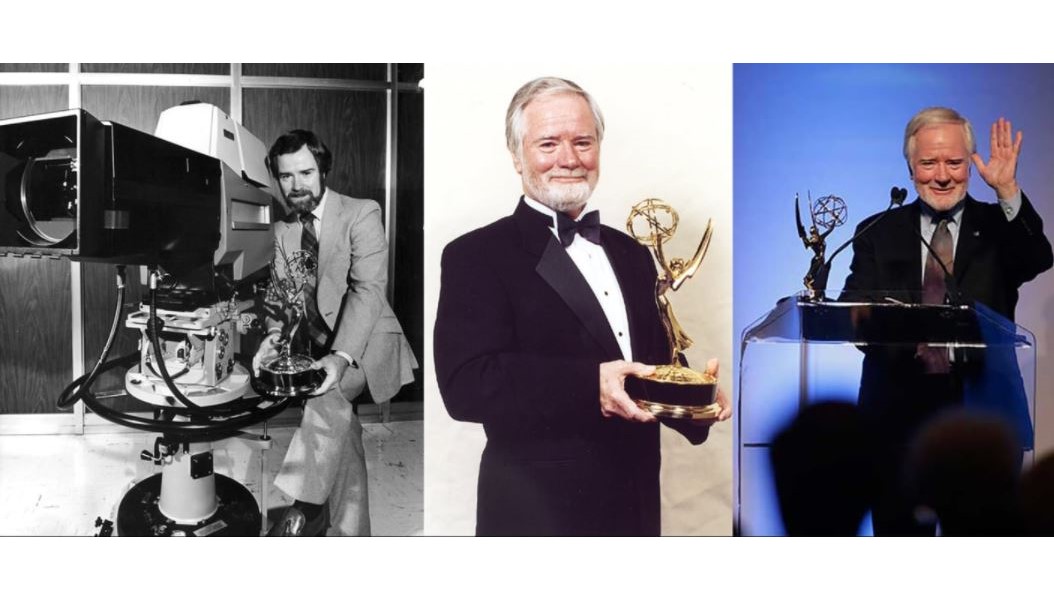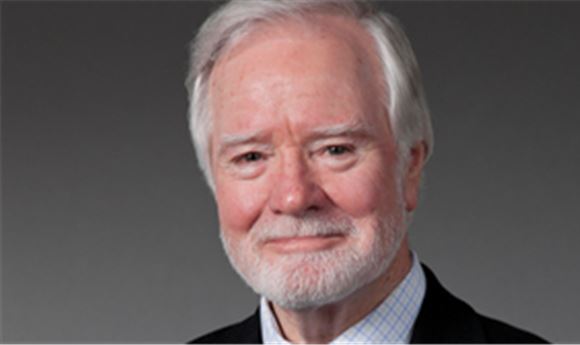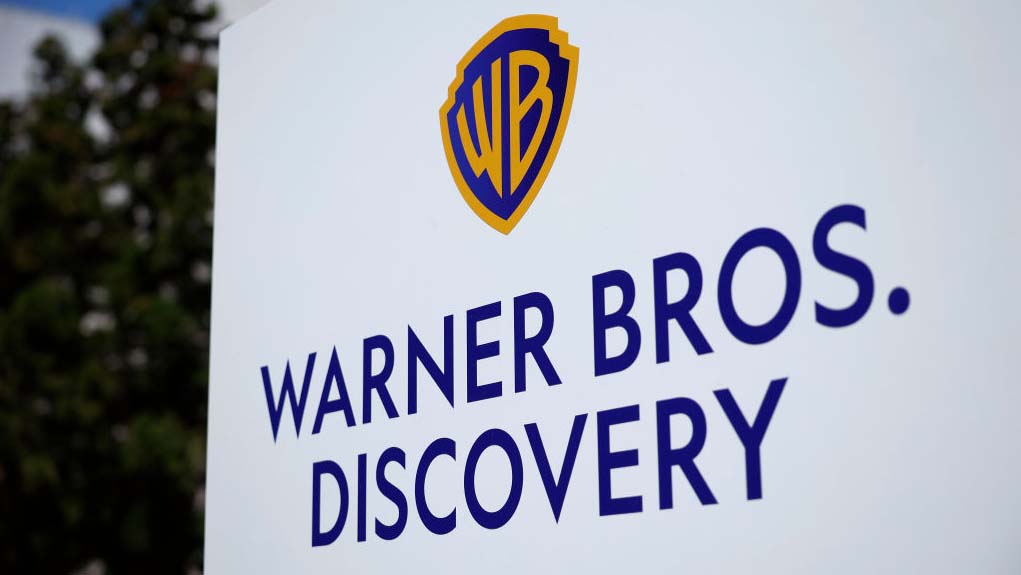
MELVILLE, N.Y.—Larry Thorpe, one of the most influential figures in the field of broadcast and film technology for the past half century, has announced his retirement as senior fellow from Canon USA, where he served nearly 20 years, developing and promoting the company’s line of professional lenses and digital cameras.
Thorpe is retiring April 30, 60 years to the day he began in this business, starting with the BBC in 1961. His career spanned a period of rapid development of cameras and related imaging technologies for both broadcast and film—from the RCA TK 47 to Canon EOS digital cinema cameras—and he has received numerous industry honors and awards, including the Charles F. Jenkins EMMY Lifetime Achievement Award in 2014.
A summary of his many accomplishments can be found here.
TV Tech sat down with Larry this week to discuss his career and his thoughts about how broadcasting and film have evolved over the years.
TV Tech: Congratulations on your well-deserved retirement, Larry! First off, can you share with us what prompted you to get into this business in the first place?

Larry Thorpe: I studied electronic engineering at the College of Technology in Ireland, in Dublin. And in my final year I went over to the U.K., seeking future employment as an engineer as there wasn't much in Ireland back in the early 60s. One of my interviews was with the BBC, and I liked what they said and what they offered. So I jumped into the BBC, and I've been in broadcasting ever since 1961.
TVT: What did you do at the BBC?
The professional video industry's #1 source for news, trends and product and tech information. Sign up below.
LT: I was in the BBC designs department; they had a place right in central London where they had many labs, a lot of engineers designing our own equipment for the many facilities of BBC. Color was big at that time so we were immersed in all sorts of early color equipment. If they were a hit, some of that development would be handed over to one of the U.K. manufacturers and become a product, but a lot of it was custom designed. I did learn my design capabilities while I was there for five years.
TVT: Did you always plan to go into imaging and image acquisition?
LT: Well, RCA came to London on a recruiting campaign in 1965 and was looking for broadcast engineers, because at that time all the Americans were going into aerospace and not into broadcasting, so they hired a lot of Europeans at that time and I was one of a wave that went over—my wife and I were newly married—and we decided to have a one- or two-year adventure in America, and here we are in 2021. At RCA, I went straight into camera development.
TVT: Who are your biggest inspirations?
LT: One of the greatest mentors I had was Neville Watson, who headed up the BBC designs department. He was tremendous at nurturing me, encouraging me and we stayed friends for many many years when we would meet at Montreux and IBC over the years.
Then when I came to RCA, my mentor there was the famous Henry Kozlowski, who ended up in advanced development. He spent a lot of time with me while I was developing cameras for RCA. At Sony, it was a number of people, including the founder of the broadcast company Masahiko Morizono, who was the guy who decided they were going to go into HD full steam. And the fact that I was enthusiastic about it, he liked me for that and he spent quite a bit of time encouraging me. And then I came to Canon and of course I had Mr. Yamasaki who hired me and Ken Ito who's still with us, he was one of my mentors, still, still is. And more recently Scott Antaya.
TVT: What was your mission when you were brought on board to Canon nearly 20 years ago?
LT: Mr. Yamasaki said “I need help in marketing of broadcast lenses,” and he asked if I'd come aboard for a couple of years to do that because I had retired from Sony in 2003. So I came in for a couple of years and here we are 17 years later, I'm still with Canon.
And it was somewhere in the middle of that period there that Canon elected to enter the digital cinematography world. I was part of a planning group that was looking into that and recommending to Japan that we do that, and then they did it and the rest is history. I got back to my love of cameras, with all of the cinema EOS products.
TVT: So you kind of divided your time between the lens and the camera side.
LT: Yes, right up to today, I’ve been dividing my time between broadcast lenses, which we now have many 4K long zooms, and cinema EOS lenses and optics and reference displays.
TVT: As a long-time veteran of this industry, what has surprised you the most over the years in regards to this business and how it has evolved?
LT: Well, there's always surprises, but one particular surprise is the durability of the 2/3-inch image format. I was at RCA when we gave birth to that image format, with a small pickup tube that later became CCDs. Forty years later it's still pretty well the center of the universe for live broadcasting, because you can make gigantic 100:1 zoom lenses in that small format and it's still reasonably sized, etc.
And because the 2/3-inch was born in standard definition, we wondered about high definition television 2/3-inch sensors and optics and we made that too, I mean, collectively the industry made it. And then, here we are 4K and 2/3-inch makes beautiful 4K in optics and image sensors.
And it's flexible in that there's been tremendous technological advances you couldn't have done 20-30 years ago, or today, that can be done with powerful computer-aided design etc.
TVT: What project or initiative that you've worked on has been the most challenging?
LT: Among my biggest challenges was my “swan song” at RCA, when I was made the leader of the group that developed the TK 47, the world's first fully automatic studio camera in the latter part of the 1970’s. The microprocessor had just been born, software was emerging, and we worked with some scientists at the Princeton research labs of RCA, and they helped us develop that, but that was a huge project, huge. And for three years I was just buried in that and the last two years we were working shifts to try and get that finished in time.
And that was one of the biggest. Also challenging was dealing with all of the recording formats, all the way through HDTV, while I was promoting during my time at Sony. I was immersed in the standardization of HDTV, and then at Canon, it's been HDTV and 4K cinema.
I’m leaving at a time where it's still incredibly exciting, which is a small regret but I still think it's the right thing to do.
TVT: Tell us about your experience working with film director George Lucas
LT: That was back in the 90’s. One of our sales people at Sony brought the Digital Betacam to Lucasfilm and they were intrigued at digital camcorders and digital recording. They were very impressed with the quality of standard definition.
And they said to us, “you know, if you could elevate the resolution, move it towards HD, think about 24 frame, we might get really interested.” So a year later we brought an HD camcorder to Lucas, and that really ignited their interest and they said, “now that we’ve got it, you’ve got to do it 24 frame.”
And that took a big discussion, because that involved the entire system, including the editing and post production. So we formed an alliance with some entities, including Panavision and Lucasfilm Light, and ultimately ended up with a 24-frame system, and almost as soon as we handed that over to Lucas for the “Star Wars” films.
In 2000, James Cameron asked for a meeting, and in 2001, I brought him to NAB to see a 24-frame high-definition system. He was looking at that for 3D. We took him to Japan, formed a working group with him and he ended up working with Vince Pace, and they made the 3D system that did “Avatar.” And then Francis Ford Coppola as well, he was one of the first actually into like high definition.
These were all mavericks—they weren't the Hollywood community, they lived outside Hollywood, which at that time was still resisting HD; they said “no films!” But the mavericks said, “man, we need to try something different,” and they made it happen.
TVT: You played a huge part in the transition to HDTV. Did the transition to high definition pan out the way you expected? What was the biggest surprise there?
LT: How long it took! But there's a simple reason for that. Before HD, production standards were developed by the broadcast industry, and largely, the film industry worked on production standards for television and movies.
But when HD came along, the computer industry said, “oh, we’ve got to be part of this, this is too important.” And the Department of Defense says “we’ve got to be part of this, it's too important,” and academia as well. So suddenly the SMPTE working groups were just loaded with all of these entities who were somewhat strangers to us. And there were fierce battles.
So we ended up with two standards for HD because we couldn't come to a singular agreement—60 frame, less resolution and 60-frame, interlace, higher resolution. But it worked.
TVT: Are you satisfied with the way things turned out and are there areas of improvement you could see with the move to 4K?
LT: While there was a surge of interest in 4K among consumers, broadcasters backed off because of the almost parallel emergence of HDR and wide color gamut. So they said, “you know, that's much more visible across the living room, that is higher resolution like 4K on a small screen.”
So they said, “let's stay with 1080P, but layer in HDR and wide color gamut,” and that's the way a lot of the major sporting events have been done. But at the same time, broadcasters are shooting more 4K, downconverting, but getting used to 4K and investing in 4K lenses and cameras that are switchable to HD. So there's a slower transition to 4K in broadcast, live broadcasting and television production. For the high-end episodic programs, 4K is almost universal, and it's full frame or super 35, etc. And of course, 8K is looming.
TVT: These days, most viewers are not viewing 4K in true resolution, but with advances in compression and processing within the displays, what impact have those developments had on the future of imaging and resolution?
LT: It’s sold a lot of 4K sets! 4K TV sets have been the most popular selling sets for the last couple of years, but most of the material has been upscaled inside the sets, because the broadcast is in 1080 or 720P. But the upscalers are very good, they're very sophisticated, and they work on screens that are not too big. They seem to work very well up to like, say the 65 inch, maybe 70. But if you go much bigger than that perhaps you might see something, because the viewing distance hasn't changed, in the living room it's around 10 feet, average. But screens get bigger and bigger. And suddenly, the 4K, wow factor may not be there on an upscaled 1080, right, but it's working well with the sets that are selling today.
TVT: What do you plan to do now?
LT: I am finishing precisely to the day I started in this industry exactly 60 years ago. My wife and I are in good health and we want to go out now and enjoy life and travel. I mean, there's going to be a problem I have to confront, because I stopped suddenly and I was immersed in all this technology, I love it. What am I going to do to satisfy that? I've yet to find out.
Tom has covered the broadcast technology market for the past 25 years, including three years handling member communications for the National Association of Broadcasters followed by a year as editor of Video Technology News and DTV Business executive newsletters for Phillips Publishing. In 1999 he launched digitalbroadcasting.com for internet B2B portal Verticalnet. He is also a charter member of the CTA's Academy of Digital TV Pioneers. Since 2001, he has been editor-in-chief of TV Tech (www.tvtech.com), the leading source of news and information on broadcast and related media technology and is a frequent contributor and moderator to the brand’s Tech Leadership events.

